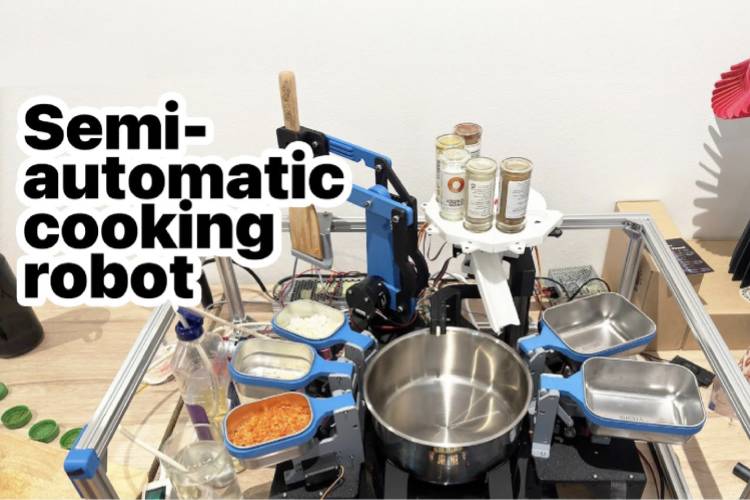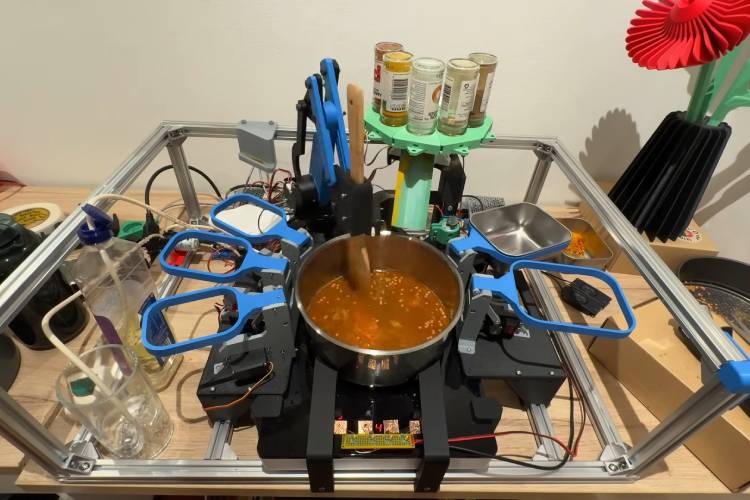
Cooking robots have become a growing fascination, with high-end automated systems and futuristic humanoid designs capturing imaginations. Even such robotic chefs have been in service in Japan for years now. However, these solutions are often expensive and inaccessible, leaving hobbyists to experiment with simpler, DIY approaches. A recent project by Josh from the Fungineering YouTube channel takes on this challenge by building a semi-automatic cooking robot capable of performing basic cooking tasks, blending low-cost components with custom mechanical and software designs.
The robot’s design revolves around a Raspberry Pi, which coordinates various components. Heating is handled by an IKEA induction cooktop, while a custom-built robotic arm equipped with Tinymovr Axion R1 actuators stirs the pot. The robotic arm was designed to balance compactness, speed, and force, ensuring it could handle thicker recipes like stews. Instead of complex programming, the arm’s stirring motion was recorded manually and played back for a natural and effective stirring action. Ingredients are delivered using 3D-printed hoppers, each controlled by a standard 20kg servo motor that flips food into the pot. Spices, another critical component, are dispensed using a rotating rack fitted with spring-loaded 3D-printed caps actuated by servos. The first spice dispenser design struggled with consistency, particularly for fine powders like turmeric. Josh later fixed it with a vibration motor-based agitator to overcome clumping issues with these fine powders.

All of the servos are controlled by a PCA9685, 16-channel servo module connected directly to the Raspberry Pi. Liquids such as oil and water are added via peristaltic pumps connected to a six-way relay module. The pumps, running on 24V, were mounted onto the aluminium frame using 3D-printed brackets, although their slow flow rate presented a minor limitation. The induction cooktop’s capacitive touch interface was controlled remotely using a custom circuit triggered by the Raspberry Pi, enabling precise temperature adjustments. Each section of the robot was built with standard parts and carefully assembled onto a frame made of 2020 aluminium extrusions, providing modularity and durability.
Despite all the design challenges, the robot completed a cooking test, producing a simple lentil dahl. Although the meal itself was far from perfect—suffering from too much oil and uneven seasoning—the project demonstrates the feasibility of building a functional cooking robot with accessible components and innovative thinking. We can certainly say that the use of DIY robotics for everyday tasks is not that far away. More details about the cooking robot's construction and its operation can be found on Fungineering’s YouTube Video.

